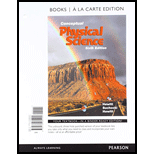
The purpose of coefficient in a
Answer to Problem 1RCQ
Solution:
Coefficients are the numbers which is placed in front of the reactant and product and from this we can find the ratio in which they either combine to form. Every chemical compounds have a definite stoichiometry and from using this coefficient term we can also find the stoichiometry of the compound.
Explanation of Solution
- Coefficient is the numbers, placed in front of the reactant or product to show the ratio in which they either combine to form.
- It represents the number of individual atom and molecule.
Two molecules of Hydrogen
Simply the coefficients in the equation tell us the molar ratio of each substance in the reaction to every other substance.
From the above reaction we can understand that the coefficient used in the process of balancing equations, known as stoichiometry.
We add coefficient to compounds in chemical equation to assure that quantity of reactant reacted to produce certain quantity of product.
This ratio is important when calculating the quantity of reactant which produce certain quantity of product.
So without coefficient one can know that certain reactants will produce certain products, not the ratio in which they will react with each other.
Conclusion:
Coefficient of a chemical reaction is important and it will helps to calculate the quantity of reactant and product and it is used to balance the corresponding chemical reaction is one of the main purpose of coefficient in chemical equation, and the stoichiometry can also be find out with the help of coefficient term.
Want to see more full solutions like this?
Chapter 17 Solutions
Conceptual Physical Science, Books a la Carte Edition; Modified Mastering Physics with Pearson eText -- ValuePack Access Card -- for Conceptual Physical Science (6th Edition)
- Pls help ASAParrow_forward9. When an electron moves into a uniform and perpendicular magnetic field, it will.. a. Accelerate parallel to the magnetic Field until it leaves b. Accelerate in a circular path c. Accelerate perpendicular to both the magnetic field and its original direction d. Repel back into the electric field 10. If a proton at rest is placed in a uniform magnetic field with no electric or gravitational field around, the proton will…….. a. Accelerate in the direction of the magnetic field b. Accelerate in a direction perpendicular to the magnetic field c. Move in a circular path d. Not acceleratearrow_forward7. The electric field at a distance of 1.0 mfrom a charged sphere is 100 N/C. At what distance from thesphere will the electric field be 50 N/C? a. 1.1 m b. 1.4 m c. 2.0 m d. 4.0 m 8. The electric potential due to a point charge at a point depends on a. The direction of the electric field b. The distance from the point charge c. The velocity of the point charge d. The mass of the point chargearrow_forward
- Pls help ASAParrow_forward5. The amount of energy required to move 1 C of charge from one location to another is called.. a. Electrical Potential Energy b. Potential Difference c. Electric Field d. Mechanical Energy 6. If a charge of -q exerts a force of F on a charge +3q, then the charge +3q will exert a force of a. 3F b. -3F on charge -q. C. F d. -Farrow_forwardTwo lenses are separated by 20cm distance each one has focal length |f|=10. Draw the ray diagram and find the finalimage distance if the object is 40cm away from the lens 1 with s1=40cm for the following casesa)First lense is covex the second one is convexb) First one is convex the second one is concavearrow_forward
- 1) A light source is emitting light with 800nm wavelength in a double slit experiment. The separation between the slits is0.01 m and the screen is 5 meters away.a) Find the angle for the fifth and the sixth constructive interferencesb) Find the distance between the third constructive and the third destructive interferences on the screenarrow_forwardA light is passing through a small circular hole with radius 0.002 meters. The third destructive resonance is attheta=0.004 radians. Find the wavelength of the light. Find the angle for the third constructive resonance.arrow_forwardA circular capacitor has 6mm radius. Two parallel plates are 2mm apart. Between the capacitors magnetic field is B=410^-2 Tesla in theta direction at a given time. Calculate the displacement current and change in electric field at thatmomentarrow_forward
 An Introduction to Physical SciencePhysicsISBN:9781305079137Author:James Shipman, Jerry D. Wilson, Charles A. Higgins, Omar TorresPublisher:Cengage Learning
An Introduction to Physical SciencePhysicsISBN:9781305079137Author:James Shipman, Jerry D. Wilson, Charles A. Higgins, Omar TorresPublisher:Cengage Learning Modern PhysicsPhysicsISBN:9781111794378Author:Raymond A. Serway, Clement J. Moses, Curt A. MoyerPublisher:Cengage Learning
Modern PhysicsPhysicsISBN:9781111794378Author:Raymond A. Serway, Clement J. Moses, Curt A. MoyerPublisher:Cengage Learning Physics for Scientists and Engineers with Modern ...PhysicsISBN:9781337553292Author:Raymond A. Serway, John W. JewettPublisher:Cengage Learning
Physics for Scientists and Engineers with Modern ...PhysicsISBN:9781337553292Author:Raymond A. Serway, John W. JewettPublisher:Cengage Learning



